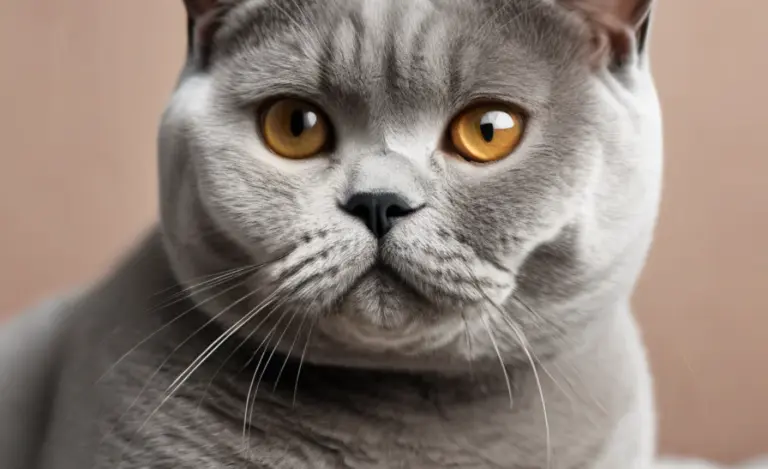British Shorthair Grooming Natural Shampoo Secret
Quick Summary: Grooming your British Shorthair with natural shampoo is simple! Brush them regularly (2-3 times a week, daily during shedding season). Bathe them only when necessary (every few months) using a natural, pH-balanced cat shampoo. Rinse thoroughly, dry gently with a soft towel, and reward them with treats and praise. This keeps their coat healthy, reduces shedding, and strengthens your bond!
British Shorthairs are known for their plush, dense coats. But keeping that coat healthy and beautiful doesn’t require harsh chemicals or complicated routines. Many owners worry about using the right products. Will it irritate their skin? Will it damage their coat? Relax! Grooming your British Shorthair with natural shampoo is easier than you think. A gentle, natural approach is often the best way to maintain their iconic look.
In this guide, I’ll walk you through a simple, step-by-step process for grooming your British Shorthair using natural shampoo. We’ll cover everything from choosing the right products to making bath time a positive experience for both of you. Let’s get started!
Understanding Your British Shorthair’s Coat

Before we dive into the grooming process, it’s helpful to understand the unique characteristics of your British Shorthair’s coat. Knowing what makes their fur special will help you choose the right products and techniques.
The Plush, Dense Coat
The British Shorthair boasts a signature coat that is:
- Dense: It’s thick and full, giving them a rounded, cuddly appearance.
- Plush: The coat has a soft, luxurious feel.
- Even: The hairs are relatively uniform in length, creating a consistent texture.
- Resilient: The coat is naturally resistant to matting and tangles, but regular grooming is still essential.
Why Natural Shampoo Matters
Using natural shampoo offers several benefits for your British Shorthair’s coat and skin:
- Gentle on Sensitive Skin: British Shorthairs can sometimes have sensitive skin. Natural shampoos are less likely to cause irritation or allergic reactions.
- Avoids Harsh Chemicals: Natural shampoos are free from harsh chemicals like sulfates, parabens, and artificial fragrances, which can strip the coat of its natural oils.
- Maintains Coat Health: Natural ingredients help nourish and hydrate the coat, keeping it soft, shiny, and healthy.
- Environmentally Friendly: Choosing natural products is better for the environment.
Choosing the Right Natural Shampoo
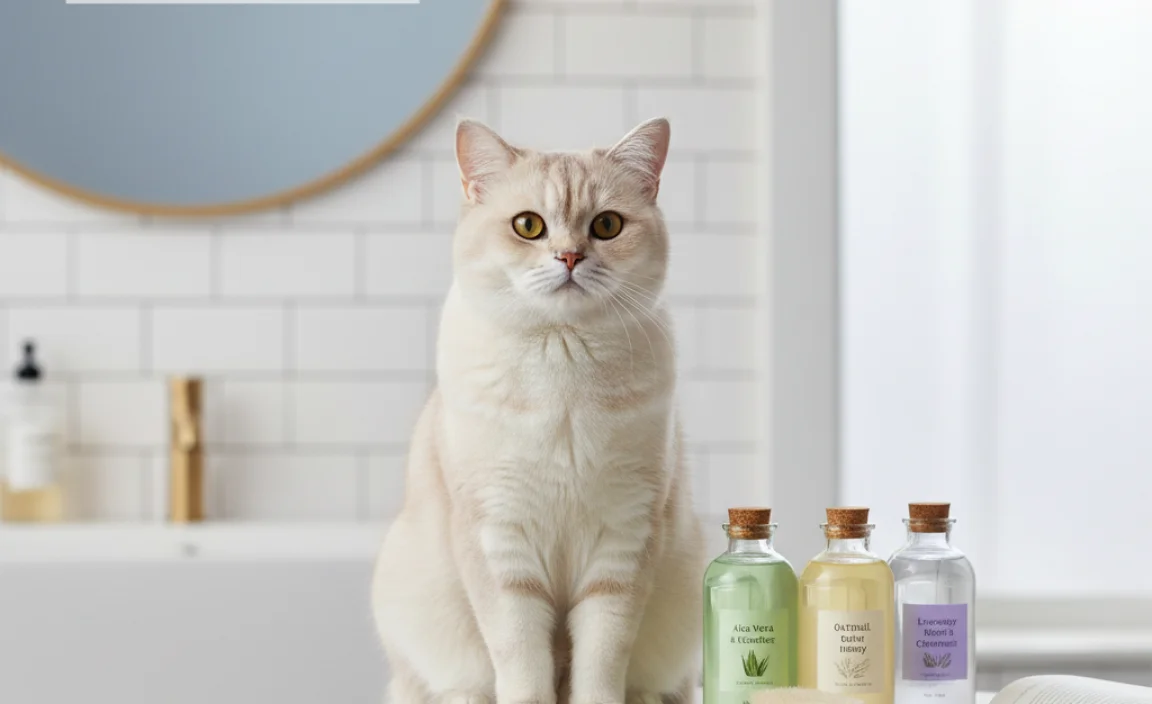
With so many options available, selecting the right natural shampoo for your British Shorthair can feel overwhelming. Here’s what to look for:
Key Ingredients to Look For
- Aloe Vera: Soothes and moisturizes the skin.
- Oatmeal: Helps relieve itching and inflammation.
- Coconut Oil: Adds shine and conditions the coat.
- Essential Oils (Used Sparingly): Some essential oils like lavender or chamomile can have calming properties, but use them with caution and ensure they are diluted and safe for cats. Always consult with your veterinarian before using essential oils.
Ingredients to Avoid
- Sulfates: Harsh detergents that can strip the coat of its natural oils.
- Parabens: Preservatives that may be harmful.
- Artificial Fragrances: Can cause allergic reactions and skin irritation.
- Alcohol: Can dry out the skin and coat.
pH Balance is Crucial
Cats have a different skin pH than humans. Using human shampoo on your British Shorthair can disrupt their skin’s natural balance, leading to dryness, irritation, and other skin problems. Always choose a shampoo specifically formulated for cats with a pH balance of around 6.0 to 7.0. According to the Cornell Feline Health Center, maintaining the correct pH balance is essential for healthy skin.
Step-by-Step Guide to Grooming Your British Shorthair with Natural Shampoo
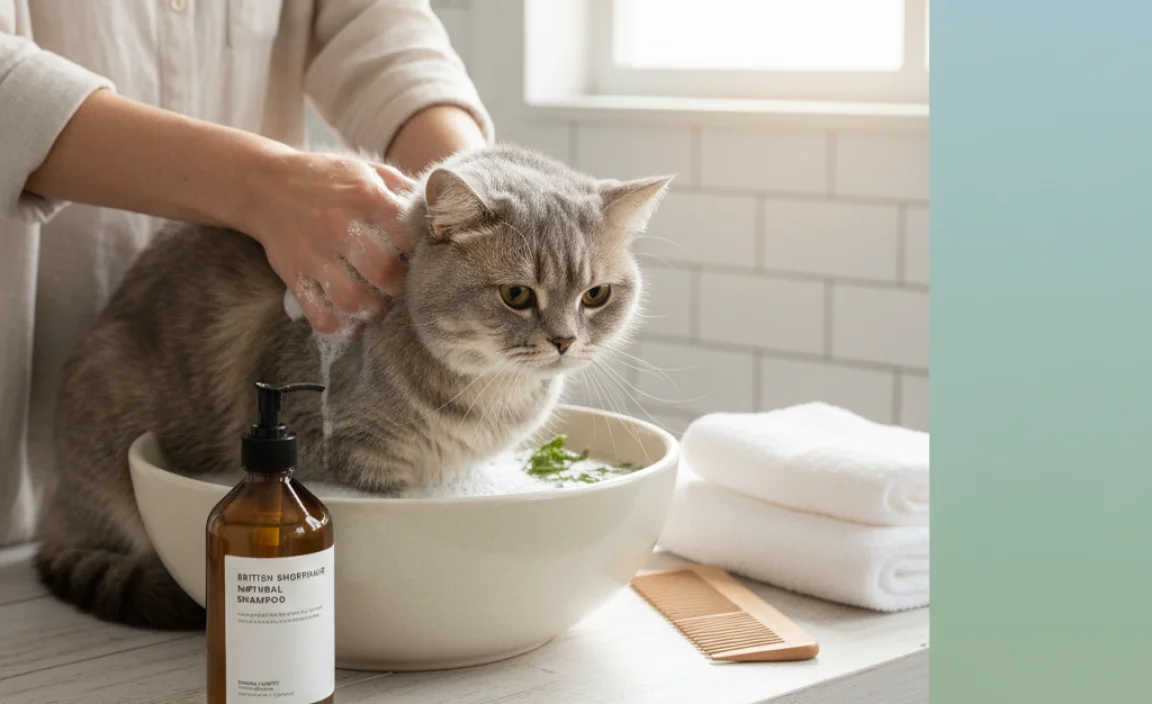
Now, let’s get to the grooming process! Follow these steps for a successful and stress-free bath time for your British Shorthair.
Step 1: Preparation is Key
Before you even think about turning on the water, take these preparatory steps:
- Brush Your Cat: Brush your British Shorthair thoroughly to remove any loose fur and mats. This will make the bathing process much easier.
- Gather Your Supplies: Have everything you need within reach:
- Natural cat shampoo
- Soft towel
- Non-slip mat for the tub or sink
- Pitcher or cup for rinsing
- Treats
- Choose the Right Location: A bathroom sink or bathtub works well. Make sure the area is safe and comfortable for your cat.
- Trim Claws (Optional): If your cat’s claws are sharp, consider trimming them beforehand to avoid scratches.
Step 2: Getting Your Cat Comfortable
Many cats are naturally wary of water. Here’s how to make the experience less stressful:
- Introduce Water Gradually: Start by running a small amount of lukewarm water (not too hot, not too cold) in the sink or tub.
- Use Positive Reinforcement: Talk to your cat in a calm, soothing voice. Offer treats and praise to create a positive association with the water.
- Avoid Sudden Movements: Move slowly and deliberately to avoid startling your cat.
Step 3: The Bathing Process
Now it’s time to get your British Shorthair clean!
- Wet the Coat: Gently wet your cat’s coat with the lukewarm water, avoiding the face and ears. Use a pitcher or cup to pour water over their body.
- Apply Shampoo: Apply a small amount of natural shampoo to your hands and lather it gently into your cat’s coat, starting from the neck and working your way down. Avoid getting shampoo in their eyes and ears.
- Massage and Clean: Massage the shampoo into the coat for a few minutes to loosen dirt and debris. Pay attention to areas that tend to get dirtier, such as the paws and underbelly.
- Rinse Thoroughly: Rinse your cat’s coat thoroughly with lukewarm water until all traces of shampoo are gone. Residue can cause skin irritation.
- Final Rinse: Do a final rinse with clean water to ensure all shampoo is removed.
Step 4: Drying Your Cat
Drying is just as important as washing. Here’s how to do it properly:
- Towel Dry: Gently wrap your cat in a soft towel and pat them dry. Avoid rubbing vigorously, as this can cause matting.
- Use a Low-Heat Hair Dryer (Optional): If your cat tolerates it, you can use a hair dryer on a low heat setting to speed up the drying process. Keep the dryer moving and avoid getting too close to their skin.
- Brush Again: Once your cat is mostly dry, brush their coat again to remove any remaining tangles and fluff up their fur.
Step 5: Post-Bath Pampering
Reward your British Shorthair for their cooperation!
- Offer Treats: Give your cat their favorite treats to reinforce positive associations with bath time.
- Provide Affection: Cuddle and pet your cat to reassure them and strengthen your bond.
- Keep Them Warm: Make sure your cat stays warm until they are completely dry to prevent them from getting chilled.
Grooming Tools for British Shorthairs
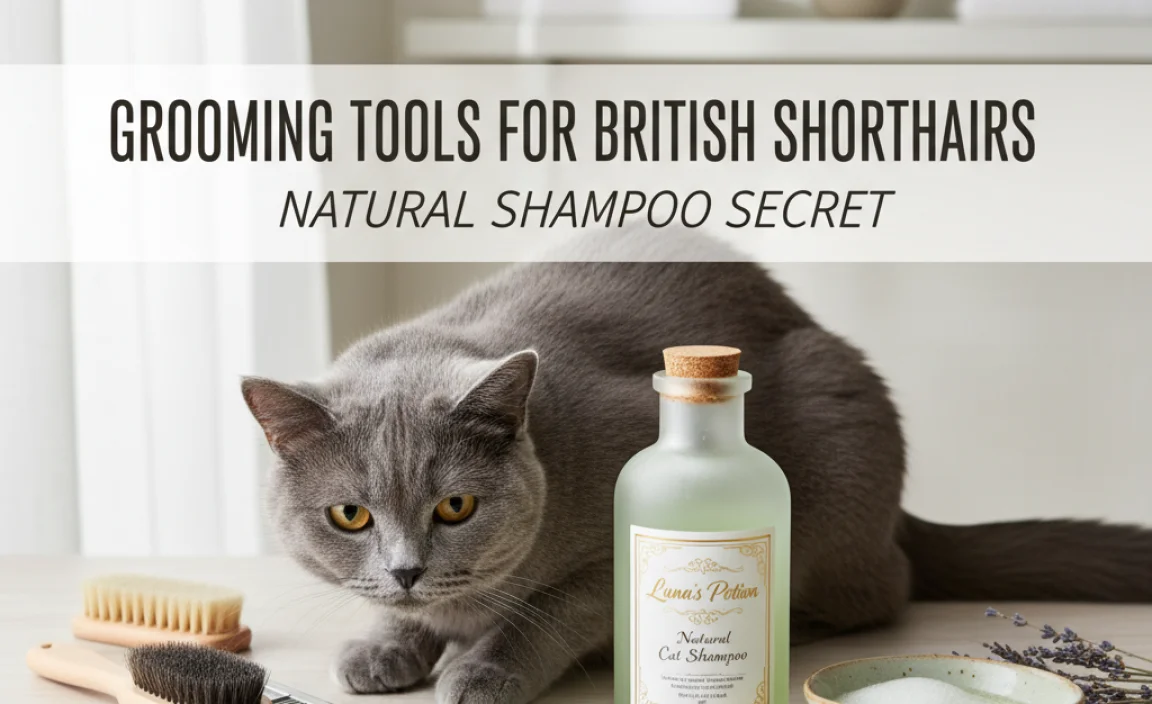
Having the right tools can make grooming your British Shorthair much easier and more effective. Here are some essential grooming tools to consider:
- Slicker Brush: Excellent for removing loose fur and preventing mats.
- Metal Comb: Helps to detangle knots and distribute natural oils throughout the coat.
- Grooming Gloves: A gentle way to remove loose fur while petting your cat.
- Nail Clippers: Specifically designed for trimming cat claws.
Grooming Frequency: How Often Should You Bathe Your British Shorthair?
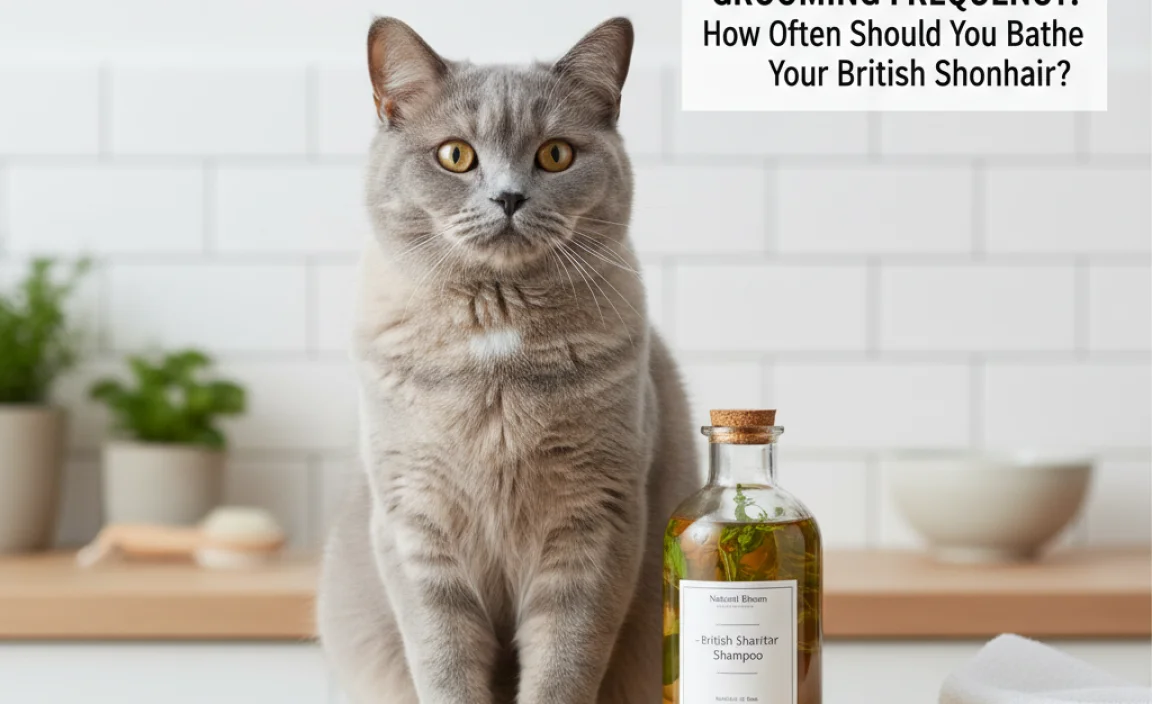
British Shorthairs don’t require frequent bathing. Over-bathing can strip their coat of its natural oils, leading to dryness and skin irritation. Here’s a general guideline:
- Every Few Months: Bathe your British Shorthair only when necessary, such as when they are visibly dirty or have a strong odor.
- Shedding Season: You may need to bathe them more frequently during shedding season to help remove loose fur.
- Spot Cleaning: For minor messes, spot cleaning with a damp cloth is often sufficient.
Addressing Common Grooming Challenges
Even with the best preparation, some British Shorthairs may resist grooming. Here are some tips for addressing common grooming challenges:
- Start Young: Introduce grooming early in your cat’s life to help them get used to the process.
- Be Patient: Don’t force your cat to be groomed if they are resisting. Try again later when they are more relaxed.
- Use Positive Reinforcement: Reward your cat with treats and praise to create a positive association with grooming.
- Keep Sessions Short: If your cat is easily stressed, keep grooming sessions short and frequent.
- Seek Professional Help: If you are struggling to groom your British Shorthair, consider seeking help from a professional groomer.
DIY Natural Shampoo Recipes (Optional)
If you’re feeling adventurous, you can even make your own natural shampoo at home. Here’s a simple recipe:
Gentle Oatmeal Shampoo
This shampoo is great for soothing itchy skin.
| Ingredients | Instructions |
|---|---|
|
|
Important Note: Always test a small amount of homemade shampoo on your cat’s skin before using it all over to check for any allergic reactions.
The Benefits of Regular Grooming Beyond Bathing
Grooming your British Shorthair goes beyond just bathing. Regular brushing offers a multitude of benefits, contributing to their overall health and well-being.
- Reduced Shedding: Regular brushing removes loose fur, minimizing the amount of hair your cat sheds around the house.
- Prevention of Mats and Tangles: Brushing helps prevent mats and tangles from forming in your cat’s coat, especially in areas like the underarms and behind the ears.
- Stimulation of Blood Circulation: Brushing stimulates blood circulation in the skin, promoting healthy hair growth.
- Early Detection of Skin Problems: Regular grooming allows you to check for any signs of skin problems, such as lumps, bumps, or irritations. According to the International Cat Care organization, early detection is key to treating skin conditions effectively.
- Strengthened Bond: Grooming can be a bonding experience for you and your cat, strengthening your relationship and building trust.
When to Consult a Veterinarian
While grooming is an essential part of caring for your British Shorthair, it’s important to recognize when a trip to the veterinarian is necessary. Consult your vet if you notice any of the following:
- Sudden Hair Loss: Excessive or sudden hair loss can be a sign of an underlying health problem.
- Skin Irritation or Inflammation: Redness, swelling, or itching can indicate an allergic reaction or infection.
- Changes in Coat Texture: A dull, brittle, or oily coat can be a sign of nutritional deficiencies or hormonal imbalances.
- Lumps or Bumps: Any unusual lumps or bumps on your cat’s skin should be checked by a veterinarian.
- Changes in Behavior: If your cat suddenly becomes resistant to grooming or shows signs of pain, consult your vet.
Frequently Asked Questions (FAQ)
How often should I brush my British Shorthair?
Brush your British Shorthair 2-3 times a week, daily during shedding season.
Is it okay to use human shampoo on my British Shorthair?
No! Human shampoo can disrupt their skin’s pH balance. Always use a shampoo specifically formulated for cats.
What if my cat hates water?
Introduce water gradually, use positive reinforcement, and keep bath time short and sweet.
Can I use essential oils in my cat’s shampoo?
Use essential oils with caution and always dilute them properly. Consult your veterinarian first.
What are the signs of skin irritation in cats?
Redness, itching, inflammation, and excessive scratching are common signs of skin irritation.
How can I make bath time less stressful for my cat?
Prepare everything in advance, use a calm voice, offer treats, and avoid sudden movements.
What should I do if my cat gets shampoo in their eyes?
Flush their eyes with clean water immediately. If irritation persists, consult your veterinarian.
Conclusion
Grooming your British Shorthair with natural shampoo is a simple yet effective way to keep their coat healthy, reduce shedding, and strengthen your bond. By choosing the right products, following a gentle approach, and being patient with your feline friend, you can make grooming a positive experience for both of you. Remember, regular brushing is just as important as bathing, and early detection of any skin problems is crucial for maintaining your cat’s overall well-being. With a little love and care, your British Shorthair will continue to sport that iconic plush coat for years to come!



